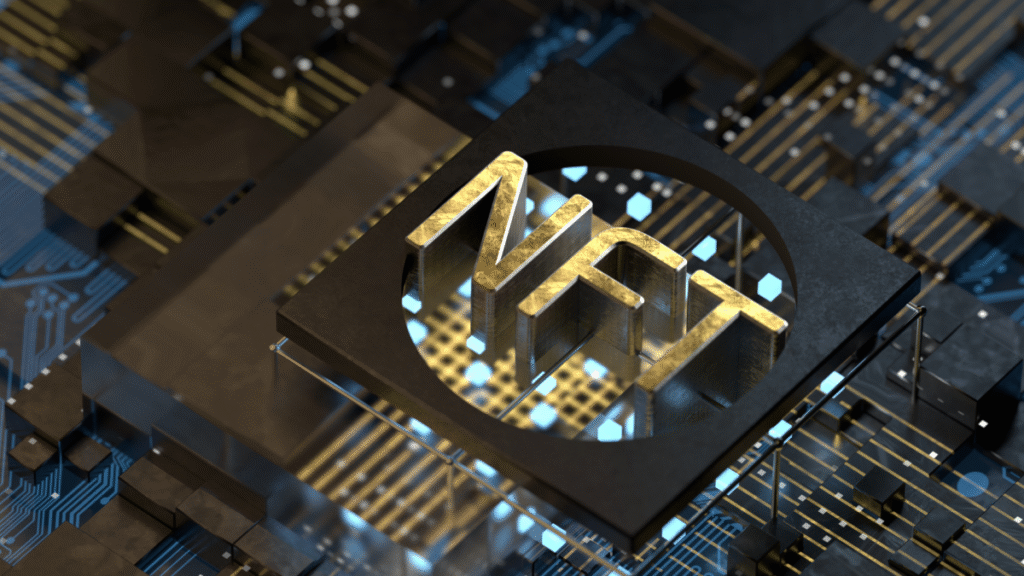Digital luxury, encompassing non-fungible tokens (NFTs) and Web3 fashion, has emerged as a transformative force that bridges the physical and virtual worlds. Leading fashion houses like Gucci, Prada, and Dolce & Gabbana are not merely dipping their toes into this digital revolution—they are diving headfirst, creating immersive experiences that redefine what it means to own and experience luxury in the 21st century.
This burgeoning market represents more than just a technological trend; it signifies a fundamental shift in how consumers, particularly younger generations, perceive value, ownership, and self-expression. As the metaverse expands and digital identities become increasingly important, luxury brands are racing to establish their presence in virtual environments where creativity knows no bounds and traditional manufacturing limitations cease to exist. The marriage of craftsmanship heritage with cutting-edge technology is producing a new category of collectibles that command premium prices while opening entirely new revenue streams for fashion houses that have traditionally relied solely on physical products.
The Rise of Digital Luxury in the Fashion Industry
The concept of digital fashion initially seemed paradoxical to an industry built on tactile experiences, luxurious fabrics, and physical craftsmanship. However, the rapid evolution of technology and changing consumer behaviors have proven that luxury can exist beyond the tangible realm. The NFT market explosion in 2021 served as a catalyst, demonstrating that digital items could possess genuine scarcity, provenance, and value—qualities that have always been central to luxury goods.
Fashion brands recognized an opportunity to extend their creative vision into unlimited digital spaces where garments could defy physics, incorporating impossible materials, gravity-defying structures, and dynamic elements that change with viewer interaction. This virtual fashion revolution addresses several contemporary challenges, including sustainability concerns associated with physical production, the desire for unique digital self-expression in online spaces, and the need to engage tech-savvy younger consumers who spend significant portions of their lives in digital environments.
The market has grown exponentially, with analysts projecting substantial continued growth as more brands enter the space and consumer acceptance increases. What began as experimental projects has evolved into strategic business initiatives with dedicated teams, substantial investments, and integration into broader brand strategies. The blockchain-based fashion ecosystem now includes not only collectible NFTs but also wearable items for gaming avatars, virtual fashion shows, digital twins of physical products, and exclusive community access tokens.
How Gucci Is Leading the Digital Fashion Revolution
Gucci has positioned itself as perhaps the most forward-thinking luxury brand in embracing Web3 technology. The Italian fashion house launched its first NFT collection in collaboration with auction house Christie’s, selling a digital artwork inspired by its signature aesthetic for substantial sums that validated the market’s potential. This initial success paved the way for increasingly ambitious projects that blend Gucci’s rich heritage with innovative digital experiences.
The brand’s creation of Gucci Vault, a dedicated platform for experimental projects and vintage archive pieces, demonstrates its commitment to building a comprehensive digital luxury ecosystem. Within this space, Gucci has released multiple NFT collections, including collaborations with digital artists and limited-edition virtual items that holders can use across various metaverse platforms. These pieces maintain the brand’s distinctive design language while exploring new aesthetic possibilities that would be impossible in physical form.
Gucci has also invested heavily in gaming partnerships, creating virtual items for popular platforms where millions of users can purchase and wear digital Gucci pieces on their avatars. This strategy extends brand visibility to younger demographics while generating revenue from entirely new channels. The brand’s NFT drops often sell out within minutes, commanding prices that rival or exceed physical counterparts, proving that consumers attribute significant value to digital ownership when combined with brand prestige and authenticated scarcity.
Furthermore, Gucci’s exploration of token-gated experiences creates exclusive communities where NFT holders gain access to special events, early product releases, and unique content. This approach transforms digital collectibles from mere images into keys that unlock ongoing relationships and privileges, increasing their long-term value proposition and creating sticky customer relationships that extend across physical and digital realms.
Prada’s Strategic Approach to Web3 Fashion
Prada has taken a more measured yet equally significant approach to the digital luxury market, focusing on quality collaborations and meaningful integrations rather than flooding the market with releases. The brand’s partnership with Adidas to create a hybrid physical-digital collection exemplifies this strategy, where purchasers of physical sneakers received corresponding NFTs that could be used in virtual worlds, creating a seamless bridge between both realms.
The Italian luxury house has also embraced the concept of community co-creation through its Timecapsule initiative, a monthly drop program that includes both physical items and NFT components. This approach allows Prada to experiment with digital formats while maintaining strong connections to its core product lines. Each Timecapsule release generates significant anticipation and engagement from both traditional luxury consumers and digital-native collectors, expanding the brand’s reach across demographic segments.
Prada’s involvement in the Aura Blockchain Consortium, alongside other luxury brands, demonstrates its commitment to developing industry-wide standards for blockchain authentication and digital product passports. This initiative addresses concerns about counterfeiting while creating infrastructure for future digital luxury experiences. By participating in collaborative efforts to build Web3 foundations, Prada positions itself as an industry leader shaping the future rather than merely reacting to trends.
The brand’s digital fashion pieces maintain Prada’s minimalist aesthetic and emphasis on subtle sophistication, proving that luxury NFTs need not be flashy or over-designed to command attention and value. This approach resonates with consumers who appreciate understated elegance and seek digital items that reflect their refined tastes even in virtual environments.
Dolce & Gabbana’s Record-Breaking NFT Success
Dolce & Gabbana made headlines with one of the most successful luxury NFT auctions in history, selling a nine-piece collection called “Collezione Genesi” for millions of dollars. This collection included both physical garments and purely digital pieces, with the highest-selling item being “The Glass Suit”—a virtual garment that exists only in digital form. The success of this auction demonstrated that collectors and fashion enthusiasts were willing to pay premium prices for digital exclusivity and the cachet associated with owning a piece of fashion history.
The Italian brand’s approach emphasizes storytelling and emotional connection, creating elaborate narratives around each digital piece that connect to the brand’s Sicilian heritage and baroque aesthetic. These aren’t simply digital renderings of existing designs but original creations that leverage the possibilities of virtual fashion to incorporate elements like animated embellishments, shifting colors, and impossible silhouettes that celebrate imagination unbound by physical constraints.
Dolce & Gabbana has continued building its Web3 presence through partnerships with digital marketplaces and metaverse platforms, ensuring their creations can be worn and displayed across multiple virtual environments. This interoperability increases the utility and value of their NFTs, as owners can showcase their digital Dolce & Gabbana pieces wherever their digital lives take them.
The brand has also explored fractional ownership models and community governance structures that allow multiple people to collectively own high-value digital pieces, democratizing access while maintaining exclusivity. These innovative ownership models represent new possibilities for how luxury brands can structure their digital collectibles to maximize both accessibility and prestige.
The Technology Powering Digital Luxury
Understanding the blockchain technology underpinning digital luxury is essential to appreciating its transformative potential. NFTs utilize blockchain networks to create verifiable scarcity and authentic provenance for digital items. Each token contains unique identifying information recorded on a distributed ledger, making it impossible to replicate or counterfeit. This technological foundation solves the fundamental challenge that has historically prevented digital items from being truly collectible—the ease of perfect duplication.
Smart contracts enable automated functions like royalty payments to creators on secondary sales, ensuring brands continue benefiting from their digital creations as they change hands. This represents a significant advantage over physical luxury goods, where brands typically only profit from initial sales. The Web3 infrastructure also enables direct relationships between brands and consumers, eliminating intermediaries and creating more transparent, efficient transactions.
Interoperability standards are emerging that allow digital fashion items to move between different platforms and virtual worlds. A Gucci handbag NFT purchased on one marketplace might be wearable in multiple metaverse environments, increasing its utility and value. This cross-platform functionality mirrors how physical luxury items can be worn anywhere, creating similar flexibility for digital counterparts.
Environmental concerns about blockchain energy consumption have led luxury brands to favor more sustainable networks or carbon offset programs. Many NFT projects now utilize proof-of-stake blockchains or layer-2 solutions that drastically reduce environmental impact, addressing criticism while maintaining technological benefits.
Consumer Behavior and Market Dynamics
The demographic driving digital luxury consumption skews younger than traditional luxury consumers, with significant participation from millennials and Generation Z who grew up with digital technology and gaming. These consumers view virtual items as legitimate purchases that provide value through self-expression, community membership, and potential investment appreciation. Their comfort with digital ownership and spending on virtual goods has created a substantial market that traditional luxury brands cannot ignore.
Psychological factors driving NFT purchases include the desire for exclusivity, the appeal of being early adopters, social signaling within digital communities, and speculative investment motivations. Many collectors view luxury NFTs as both aesthetic purchases and financial assets, expecting appreciation over time similar to physical collectibles or art. This dual purpose creates complex motivations that blend traditional luxury purchasing psychology with cryptocurrency investment culture.
The secondary market for luxury NFTs has developed sophisticated trading dynamics, with some pieces appreciating significantly while others decline in value. This market volatility creates excitement but also risk, leading brands to consider how to support long-term value for their digital creations. Some implement buyback programs, create ongoing utility for token holders, or release new content exclusively to existing collectors.
Cultural factors also influence adoption, with certain regions showing greater enthusiasm for digital fashion than others. Asian markets, particularly South Korea and Japan, have demonstrated strong interest due to gaming culture and technological adoption rates. As global awareness increases and technological barriers decrease, market expansion into new geographic regions continues.
Challenges and Criticisms Facing Digital Luxury
Despite remarkable growth, the Web3 fashion market faces legitimate criticisms and challenges. Skeptics question whether digital items can truly possess the same value as physical luxury goods, arguing that much of current enthusiasm represents speculative bubble behavior rather than sustainable market dynamics. The dramatic price fluctuations in cryptocurrency markets, which underpin NFT transactions, create instability that concerns both brands and consumers.
Technical barriers remain significant for mainstream adoption. Purchasing NFTs requires cryptocurrency wallets, an understanding of blockchain basics, and comfort navigating platforms that lack the polish and user-friendliness of traditional e-commerce. Luxury brands must invest in education and simplified interfaces to make digital luxury accessible to their existing customer bases, who may lack technical expertise.
Questions about long-term value preservation persist. Unlike physical luxury items with centuries of established collectibility, digital fashion assets lack historical precedent. Will today’s NFTs be valued decades from now, or will technological obsolescence render them inaccessible or irrelevant? Brands must consider digital preservation strategies and format longevity when creating products intended to become heirlooms.
Environmental concerns, though mitigated by newer blockchain technologies, continue generating negative publicity. Luxury brands pride themselves on quality and craftsmanship, and association with environmentally problematic technologies contradicts sustainability messaging that has become increasingly central to brand positioning.
The Future of Digital Luxury and Web3 Fashion
The trajectory of digital luxury points toward deeper integration between physical and virtual experiences rather than complete separation. Phygital products—combining physical items with digital twins or companion NFTs—represent a likely evolution that leverages both realms’ strengths. Imagine purchasing a physical Prada handbag that comes with a digital version for your metaverse avatar, both authenticated on blockchain with verifiable ownership history.
Augmented reality applications will enable consumers to visualize digital fashion in real-world contexts, trying on virtual garments using smartphone cameras before purchasing. This technology could revolutionize online shopping by providing better visualization than traditional photography while maintaining the creative freedom of digital design.
As metaverse platforms mature and gain mainstream adoption, the utility and demand for virtual luxury items will likely increase. If people spend significant time in immersive digital environments for work, socializing, and entertainment, the desire to present curated digital appearances will drive fashion consumption in those spaces. Major technology companies investing billions in metaverse infrastructure suggest this future is approaching rapidly.
Tokenization of physical luxury goods for authentication and resale tracking represents another growth area. Blockchain-verified provenance could solve counterfeiting problems while creating transparent secondary markets where brands can participate in ongoing value exchange. This application extends Web3 benefits to traditional luxury while building infrastructure for future digital integration.
Conclusion
The digital luxury market, spearheaded by visionary brands like Gucci, Prada, and Dolce & Gabbana, represents far more than a passing trend—it signals a fundamental evolution in how luxury is created, experienced, and valued. As NFTs and Web3 fashion continue maturing, the boundaries between physical and digital luxury will increasingly blur, creating hybrid experiences that leverage the best aspects of both realms. While challenges remain regarding accessibility, value preservation, and environmental impact, the innovative spirit driving this movement suggests solutions will emerge as the market develops.
The success of early digital luxury initiatives has proven that consumers, particularly younger generations, enthusiastically embrace new forms of ownership and self-expression when brands deliver authentic value and meaningful experiences. As technology advances and mainstream adoption increases, the digital luxury market will likely expand exponentially, creating opportunities for established luxury houses and digital-native brands alike. The fashion industry’s embrace of blockchain technology and virtual experiences demonstrates remarkable adaptability and forward-thinking vision that will shape luxury for decades to come.
FAQs
Q1: What exactly are NFTs in fashion, and why are they valuable?
NFTs (non-fungible tokens) in fashion are unique digital items authenticated on blockchain technology, creating verifiable scarcity and ownership. They’re valuable because they combine digital scarcity with brand prestige, offering exclusive virtual items, community access, and potential investment appreciation. Unlike regular digital images that can be infinitely copied, NFTs provide proven ownership of original pieces, similar to owning an original painting versus a print.
Q2: Can I wear digital fashion NFTs anywhere, or are they limited to specific platforms?
Currently, most digital fashion NFTs can be used within specific metaverse platforms or virtual environments, though interoperability is improving. Some NFTs function across multiple platforms, while others remain exclusive to particular ecosystems. Many luxury brands are working toward greater interoperability, allowing digital garments to be worn across various virtual worlds, similar to how physical clothing can be worn anywhere.
Q3: How do luxury fashion brands ensure their NFTs maintain value over time?
Luxury brands employ several strategies to support NFT value, including limited edition releases to maintain scarcity, ongoing utility through token-gated experiences and exclusive community access, partnerships ensuring usability across platforms, and some brands even implementing buyback programs. The brand’s reputation and heritage also contribute significantly to long-term value, similar to how physical luxury items appreciate based on brand prestige.
Q4: Are digital luxury NFTs environmentally friendly compared to physical fashion production?
Many modern luxury NFTs utilize energy-efficient blockchain networks like proof-of-stake systems or layer-2 solutions that consume significantly less energy than earlier blockchain technologies. While any digital technology has an environmental impact, these newer approaches often have smaller carbon footprints than physical fashion production, which involves material extraction, manufacturing, and global shipping. Many brands also implement carbon offset programs for their digital collections.
Q5: Do I need to be tech-savvy to purchase and own luxury fashion NFTs?
While some technical knowledge helps, luxury brands are increasingly creating user-friendly interfaces and providing educational resources to make NFT purchases accessible to traditional luxury consumers. Basic requirements include setting up a digital wallet and understanding fundamental blockchain concepts, but many platforms now offer simplified purchasing processes. As the market matures, expect continuing improvements in accessibility and user experience that make digital luxury as easy to acquire as physical items through traditional e-commerce.



